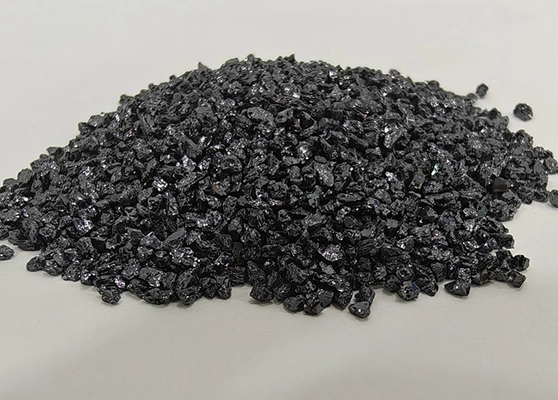Bulk density is a critical parameter when selecting abrasive materials like Brown Fused Alumina (BFA) for industrial use. It affects performance in blasting, grinding, and refractory applications. This guide explores how bulk density impacts functionality, why it matters to B2B buyers, and how to select the right grade for your processes.
What is Bulk Density?
Bulk density refers to the mass of particles per unit volume, typically expressed in grams per cubic centimeter (g/cm³) or kilograms per cubic meter (kg/m³). It includes the space between particles and is influenced by grain shape, size distribution, and compaction level.
Typical Bulk Density of Brown Fused Alumina
- Macro Grits (F12–F80): 1.5 – 1.95 g/cm³
- Micro Grits (F100–F220): 1.3 – 1.6 g/cm³
- Powder Grades (F240 and finer): 1.0 – 1.4 g/cm³
Why Bulk Density Matters in Industrial Applications
Abrasive Blasting
In blasting operations, higher bulk density indicates more mass and energy per particle, resulting in faster cleaning or coating removal. However, excessive density may damage soft substrates, so selecting the right range is essential.
Refractory Products
Bulk density determines the compaction and porosity of castables and bricks. Higher-density BFA helps improve thermal conductivity and strength in high-temperature linings, especially in steel and glass furnaces.
Grinding Wheels and Tools
In bonded abrasives, bulk density affects the grain loading and cutting efficiency. Optimizing this property enhances wear resistance and ensures consistent material removal rates.
Factors Influencing Bulk Density
- Grain Size: Coarser grains generally yield higher bulk densities due to fewer voids.
- Grain Shape: Blocky or angular grains pack more tightly than needle-like particles.
- Moisture Content: Excess moisture reduces effective density and flowability.
- Sieving and Grading Accuracy: Consistent particle sizes result in predictable bulk densities.
How to Choose the Right Bulk Density
B2B buyers should assess process needs before selecting bulk density. For example:
- High-density BFA: Ideal for high-impact blasting, steel shot replacement, and heavy-duty refractories.
- Low-density BFA: Better for precision polishing, softer substrates, or lightweight filler applications.
CanAbrasive Bulk Density Standards
At CanAbrasive, we offer brown fused alumina products with tightly controlled bulk density ranges to ensure compatibility with various B2B applications:
- Macro Grits: 1.6–1.9 g/cm³
- Micro Grits: 1.3–1.6 g/cm³
- Powder Grades: 1.1–1.4 g/cm³
All grades comply with FEPA and ISO standards and can be customized upon request.
Frequently Asked Questions
Is higher bulk density always better?
Not necessarily. It depends on the application. For example, high-density media is preferred for aggressive blasting, but lower-density grades are more suitable for precision applications or delicate materials.
How is bulk density measured?
It’s typically measured using a standardized container and tapping procedure (e.g., ASTM C29/C29M), calculating mass divided by volume.
Does bulk density affect shipping costs?
Yes. Heavier materials per volume may increase freight charges. Always consider packing options like jumbo bags or moisture-proof liners.
Can bulk density vary between batches?
Slightly, yes—especially for natural bauxite-based abrasives. However, reputable suppliers like CanAbrasive maintain strict controls to ensure consistency.
Conclusion
Understanding bulk density is essential for optimizing brown fused alumina performance in abrasive, refractory, and metallurgical applications. By choosing the right density range and reliable supplier like CanAbrasive, B2B buyers can achieve better process efficiency, cost savings, and product quality. Contact us for technical data sheets or tailored grit options.
Request a Quote or Sample
Popular Products
Grünes Siliziumkarbid
View DetailsSchwarzes Siliziumkarbid
View Details